In any process industry, level measurement is very important for safety and process purpose.
Level can be measured by two methods.
-
Direct method
-
Indirect method
Here we discuss about indirect method and which is using DP transmitter for level measurement.
A Differential pressure transmitter is a common and well understood technology for liquid level measurement. If the tank is closed or pressurized, a DP measurement must be made to compensate for the vessel pressure.
DP Transmitter Level Measurement for Open Tank
Suppose there is a open tank in which a DP transmitter installed for the measurement of level then HP leg of the DP transmitter is connected with bottom of tank and LP leg is open in atmosphere. Assume process fluid specific gravity in the tank is 1.0
Definition of specific gravity: Specific gravity is a measure of density relative to the density of a reference substance. Reference substance is taken water.
For DP Transmitter Configuration, we have to find out Zero Level & Span Level. Accordingly we have to configure Lower Range Value (LRV) and Upper Range Value (URV) using HART communicator.
DP Transmitter installed at the exact HP tapping point
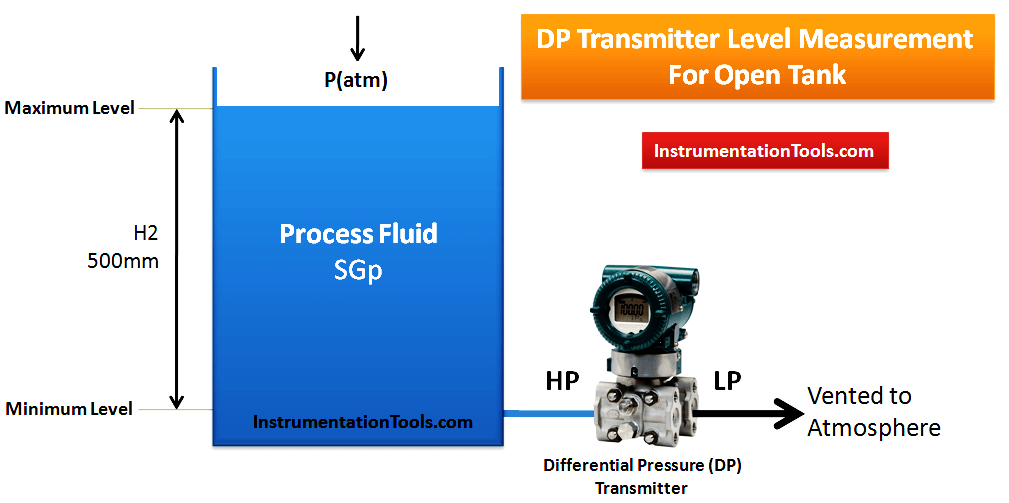
At Zero level = 0 mmwc
At Span level = H x Specific gravity
= 500 x 1.0
= 500 mmwc
Then Range = 500 – 0 = 500 mmwc
So, we have to set Lower Range Value (LRV) = 0 mmwc and Upper Range Value (URV) = 500 mmwc in the DP Transmitter using HART communicator.
DP Transmitter Installed Below Tapping Point for Open Tank
If transmitter is installed below the tank then it’s called zero suppression then calculation is below:
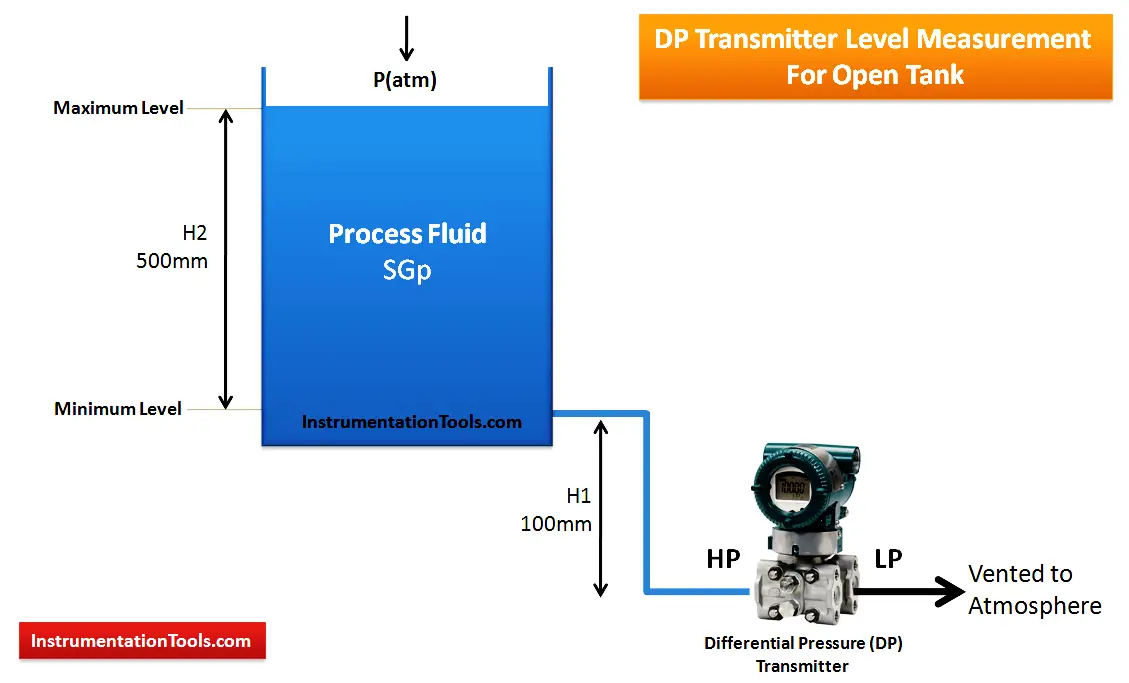
When zero suppression is used then H1 height always filled with process fluid.
At zero level (LRV) = H1 x specific gravity
= 100 x 1.0
= 100 mmwc
At 100% level (URV) = (H1 + H2) x specific gravity
= (100 + 500) x 1.0
= 600 mmwc
Range = URV – LRV = 600 – 100 = 500 mmwc
So, we have to set Lower Range Value (LRV) = 100 mmwc and Upper Range Value (URV) = 600 mmwc in the DP Transmitter using HART communicator.
Author: Ashish Agrawal
Read Next:
- Transmitter Turndown Ratio
- DP Transmitter Zero Suppression
- Cat & Mouse type Level Indicator
- Tilt Level Switch Working
- Point Level Detection
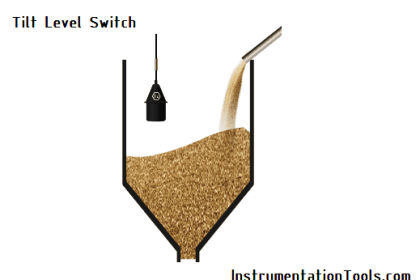
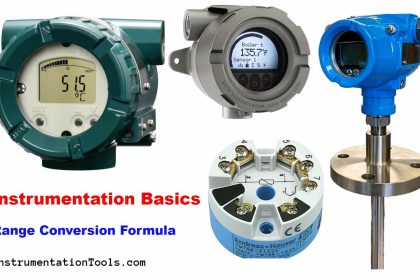
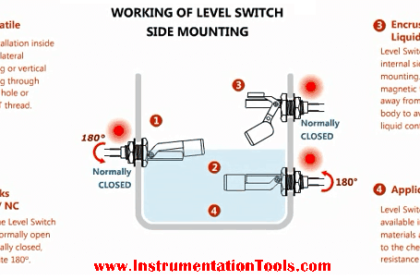
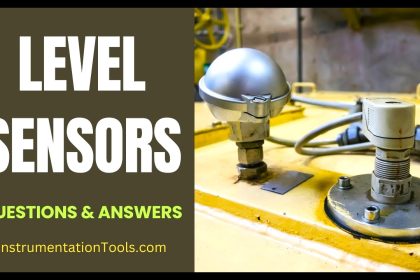
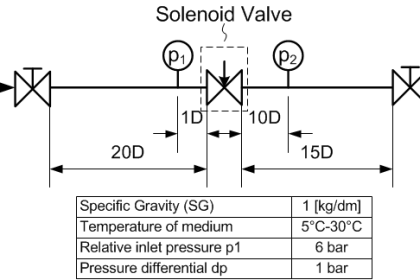
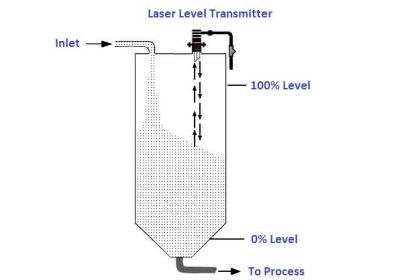
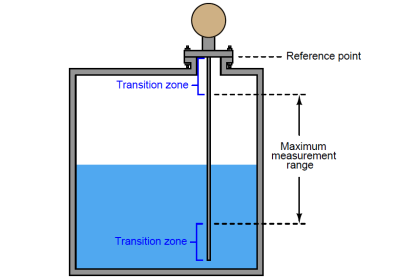
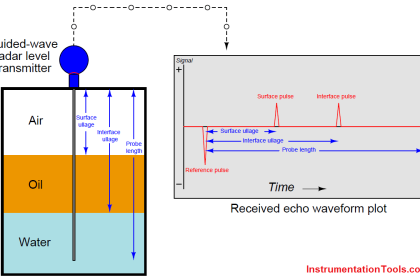


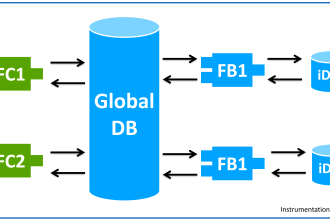
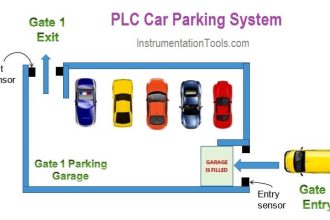
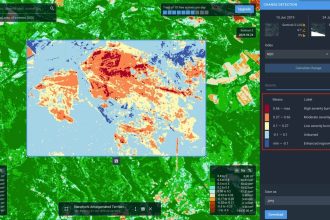
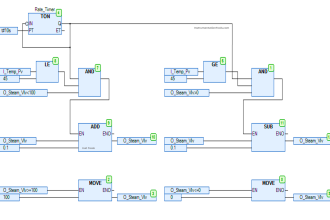

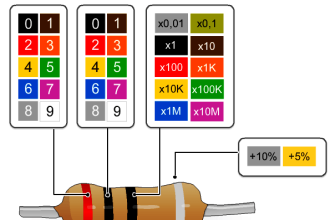

Very good knowledge…..
Best
Wonderful piece, I enjoyed it all the way.
If LRV = 100 And URV = 600 Then What is This
Range 500 mmwc
SPAN RANGE 500 MMWC
Great Info I appreciate
Dear sir kindly update for calibration procedure for Gas sensors